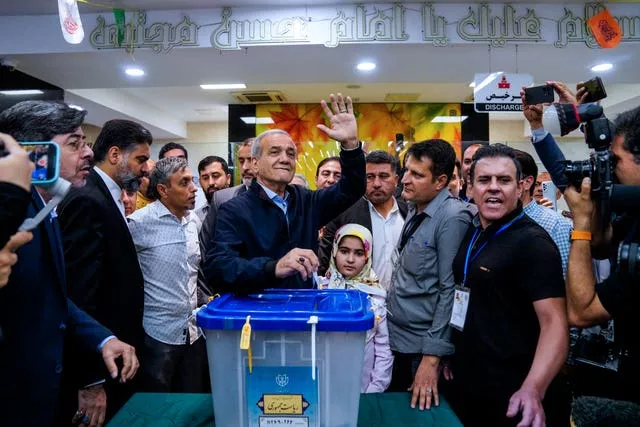Early results released on Saturday in Iran’s presidential election put the race between reformist Masoud Pezeshkian and conservative hard-line candidate Saeed Jalili.
The early results, reported by Iranian state television, did not initially put either man in a position to win Friday’s election outright, potentially setting the stage for a runoff election to replace the late hard-line president Ebrahim Raisi.
It also did not offer any turnout figures for the race yet — a crucial component of whether Iran’s electorate backs its Shiite theocracy after years of economic turmoil and mass protests.
After counting more than 14 million votes, Mr Pezeshkian had 5.9 million, while Mr Jalili held 5.5 million.
Another candidate, hard-line parliament speaker Mohammad Bagher Qalibaf, had some 1.89 million votes.
Shiite cleric Mostafa Pourmohammadi had more than 111,900 votes. Voters chose between the three hard-line candidates and the little-known reformist Mr Pezeshkian, a heart surgeon.
As has been the case since the 1979 Islamic Revolution, women and those calling for radical change have been barred from running, and the vote itself will have no oversight from internationally recognised monitors.
Iranian law requires that a winner gets more than 50% of all votes cast.

If that does not happen, the race’s top two candidates will advance to a runoff a week later.
There’s been only one runoff presidential election in Iran’s history: in 2005, when hard-liner Mahmoud Ahmadinejad bested former president Akbar Hashemi Rafsanjani.
The late president Mr Raisi died in the May 19 helicopter crash that also killed the country’s foreign minister and others.
He was seen as a protege of Iran’s Supreme Leader Ayatollah Ali Khamenei and a potential successor.
Still, many knew him for his involvement in the mass executions that Iran conducted in 1988 and for his role in the bloody crackdowns on dissent that followed protests over the death of Mahsa Amini, a young woman detained by police over allegedly improperly wearing the mandatory headscarf, or hijab.
Signup bonus from





